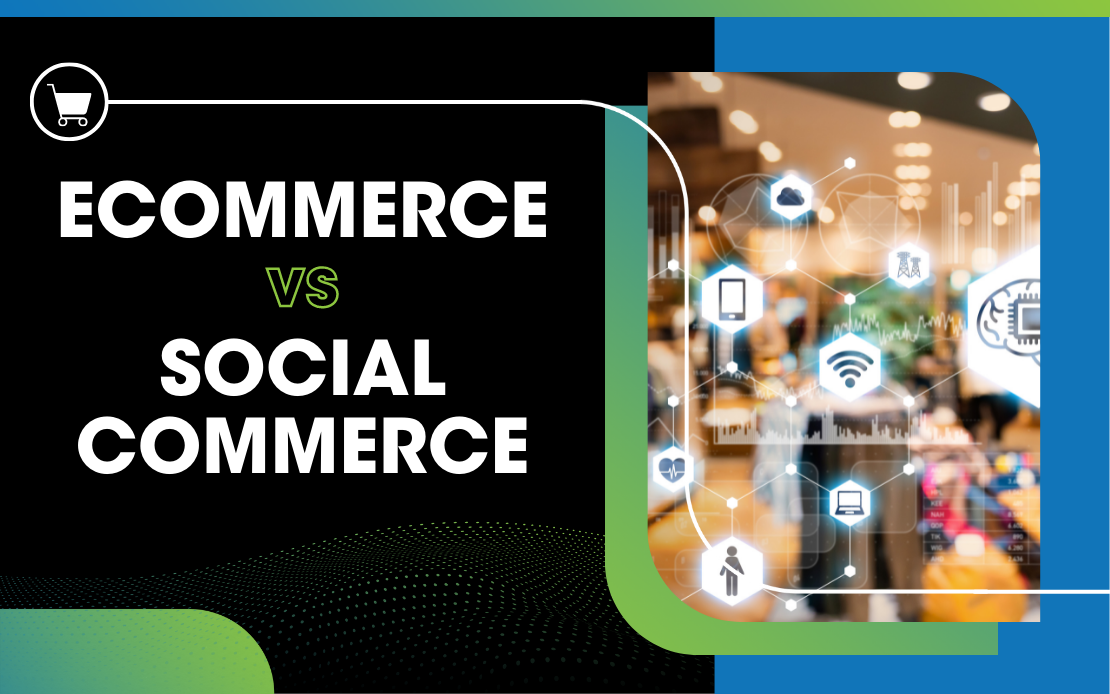
The public’s reliance on the internet for everyday activities continues to grow each day. Everything from reading to grocery shopping now has a space in the digital arena and businesses are adjusting their model to keep from getting left behind. A clear indicator of this shift is the overwhelming surge of eCommerce websites and the development of social commerce, or social shopping.
Almost every major retailer in the world has a functioning online store, whether they run exclusively online or it’s supplemental to its brick-and-mortar operations. This has turned online retail into one of the most competitive industries out there. It is projected that eCommerce sales will account for 18.8% of retail sales worldwide in 2021. With an estimated 2.14 billion global buyers searching the web for goods and services, it comes as no surprise that eCommerce is expanding to social media to create what’s being called social commerce. Millions of users can be reached on social media every day. With 48% of US internet users (age 18-34) purchasing products on social media in 2019, the number of businesses trying their hand at social commerce is steadily increasing. However, the question is: Which is better? Social Commerce or eCommerce?
Let’s take a look.
eCommerce Websites
Ecommerce sites are websites that facilitate the buying and selling of goods, digital products, or services. Most businesses, whether they are B2B, B2C, C2C, or C2B, can benefit from having an eCommerce website because they help companies expand their reach to anyone who has access to the internet.
We first saw the rise of eCommerce Marketplaces in the late 1990s to early 2000s with the emergence of brands we now know as eBay, Amazon, and Alibaba. By 2010, eCommerce had become a billion-dollar industry with several sites bringing in more than $10 billion in revenue a year. As the public’s reliance on the internet grew, so did eCommerce sales.
When looking at the shift from brick and mortar to eCommerce, the main difference seen between the two is that with eCommerce, every action made during the buying processes occurs online. By operating digitally, businesses can shorten the distance from discovery to purchase while also offering multiple payment options and utilizing web-building plugins that can grow their site and its discoverability.
Ecommerce sites are also affordable, convenient, and easy to make. Many eCommerce web building sites are free to access so almost anyone can try their hand at creating a site of their own. Of course, if that gets to be too much for you or you want a more customized eCommerce website, River Valley Media has a team of experienced developers who can ensure that your site has all the tools, plugins, and access points needed to make the most of your site.
Social Commerce
Once the results of eCommerce sites were seen, digital marketers and sellers set their sights on finding new ways to further integrate their products and services into a potential buyer’s digital experience to continue shortening the distance between the discovery of their business and the completion of a purchase. Getting in front of people where they already spend time online was the goal for businesses marketing products online. With 70% of the US population being active on social media, it only made sense for eCommerce to make a move toward social platforms.
Social Commerce is a lot like eCommerce in the sense that the selling process occurs online but instead of a website, the entire shopping experience happens on social media platforms. A likely buyer’s journey through social commerce would start with seeing your product in their feed, then be directed to your social shop where they can complete their purchase.
The most popular social platforms participating in social commerce include Instagram, Facebook, and Pinterest. Each platform allows you to create a shop that is connected to your business page or profile. These shops include your products along with a product description that buyers can use to learn more about what you sell. Since your shop is located on a social platform, the buyer experience will be more interactive than that of eCommerce websites.
Social users can organically find your shop and its products or you can directly target a relevant audience through paid marketing campaigns, partner with other brands and influencers, and interact directly with people who have previously purchased items from your business.
And The Winner Is…
When it comes to eCommerce vs social shopping, both offer their own unique benefits. Where social commerce is almost completely integrated into the buyer’s journey, eCommerce websites are often seen as more credible and secure ways to complete a product purchase. It is also likely that it will take months of work building your eCommerce site and utilizing SEO tools to see increased interaction. With social commerce, you can see that type of interaction happen in just weeks. While social shops are relatively easy to set up, eCommerce websites offer more customization capabilities.
So when it comes to eCommerce or social commerce, it’s not so much about one being better than the other, and more about which one you can make work better for you and your business. Ecommerce websites are a great starting point and can still be used if you choose to expand to social shopping. It’s not necessary to choose one over the other when they can work hand-in-hand. Ready to set up your eCommerce website and social shops? Contact us today!
